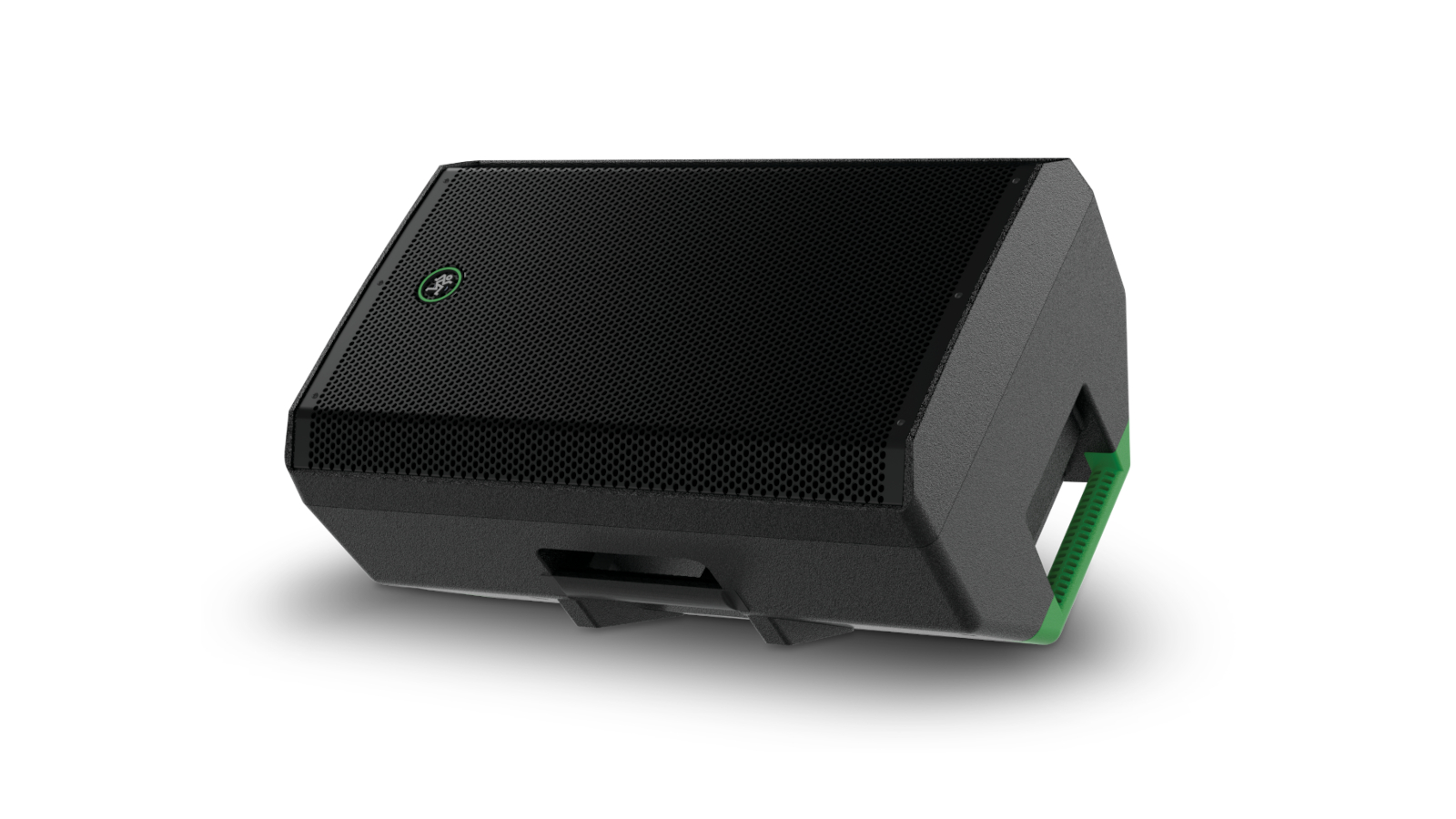GuitarPlayer Verdict
This speaker, unlike other powered speakers that lack bottom end or have brittle highs, succeeds in a serious attempt to stay true to the source.
Pros
- +
Full-range sound
- +
Easy to set up and use
- +
Great value
Cons
- -
No EQ or effects
You can trust Guitar Player.
Since the 1990s Mackie, a company founded in America’s rugged Northwest, has been designing great-sounding and reliable audio products for musicians. A good part of their success can be attributed to the thoughtful design of mixers and loudspeakers that deliver both professional quality and portability.
With the debut of their new line of Thrash-powered loudspeakers, Mackie has attempted to address perhaps the most challenging constraint to producing great audio – doing it on a budget. Thrash promises more for a fraction of what other professional powered loudspeakers cost.
I tested the Thrash215 against Mackie’s claim that this entry-level powered speaker could function as a good P.A. for solo/duo performance or as a monitor, with enough power for a small- or medium-sized gig.

Since I was performing, I was concerned enough about the quality of an entry-level loudspeaker to pack along my usual P.A., just in case. Spoiler alert: It never came out of my car.
My first observations had to do with getting the Thrash215 to the gig. This might seem trivial, but if you do a lot of gigs, how equipment handles can make all the difference.
At just over 40 pounds, the Thrash215’s cabinet design is lightweight but does not seem at all fragile
At just over 40 pounds, the Thrash215’s cabinet design is lightweight but does not seem at all fragile. Its solid, durable construction is immediately obvious, but the most striking feature – and one of the most useful – is the number, size and location of the embedded handles.
There seems to be one everywhere you need it, including oversized, bar-like handles located at the back of both the top and bottom, where you need them most. For transporting the speaker or taking advantage of the cabinet’s dual-angled sides to use it as a floor wedge, side handles provide both good balance and comfort.
All the latest guitar news, interviews, lessons, reviews, deals and more, direct to your inbox!
A standard pole mount is available at the bottom that has “feet’’ to protect both the speaker and floor.

Some features of the Thrash215 are hidden on a back panel that provides all the connectivity and control options.
You might say that its best feature for many beginning performers is its lack of features, making this powered speaker dead simple to operate.
There are no options for multiple EQ curves or input type switches. It has two dual XLR/TRS combo inputs to accept both ¼-inch or XLR cables, gain controls for those inputs and a main volume control. It’s designed to set up, plug in and play.
It’s designed to set up, plug in and play
The inputs accept a very wide range of sources, so the channel gains are marked for “U” (unity gain) at the middle of the range but also “line” and “mic,” to give you some approximate starting levels.
I noticed that the gain rises very rapidly as you move past mic, so this speaker will handle just about any input you want to use.
The one output on the back panel is an XLR, handy for either daisy-chaining more Thrash215s for better coverage or as monitors.

The first half of my gig went well with the Thrash215 on a stand. With a little adjustment of the acoustic guitar’s EQ to keep it from being “boomy,” the speaker provided more than enough power and a very clear, full-range sound.
The room was pretty lively, so any effects I might have added for vocals would have been minimal.
The Thrash215 did a good job for vocals in this solo performer configuration, even without the benefits of an external mixer.
I did find myself singing a bit “off-mic” occasionally as the 15-inch woofer, coupled with Mackie’s smart cabinet design, provides a significant amount of bottom end. A simple mixer would have tuned the system in perfectly for this gig, but it was easily doable with the Thrash215’s gain controls.

It’s worth mentioning that Mackie has always done a great job with its manuals. Understanding that manual reading is not for everyone, the manual for the Thrash is short and to the point. It provides great illustrations of how to set up the speakers in different configurations, including in larger situations, where you could add Mackie’s Thump subs or the SR18s from the SRT series.
For the second half of the evening, I set up the Thrash215 as a monitor for the band.
Again, it was a simple setup, dialing in a good level, with our mixer’s monitor output going to channel one of the Thrash.
I followed the indications on the gain control to match a line input, and setup was done.

The Thrash215 had more than enough power from its 1,300-watt class D amplifier to keep up with a band containing keyboards, drums and bass, and it showed no sign of distortion or clipping.
For me, the Thrash215’s standout feature, aside from its obvious ease of use, is the full-range sound coming from the combination of a powerful amplifier, high-performance woofers, titanium compression drivers and a great cabinet design.
These speakers clearly have the potential to get really loud when the occasion calls for it
There’s obviously more to it, including Mackie’s high- and low-frequency equalization, dynamic bass boosting, compression, limiting and thermal protection.
The result is that this speaker, unlike other powered speakers that lack bottom end or have brittle highs – either of which can distract audiences from a performance – succeeds in a serious attempt to stay true to the source.
Plus, these speakers clearly have the potential to get really loud when the occasion calls for it.

For this review, I’ve avoided the phrase “for the money” because I feel it doesn’t really matter when you’re trying to make your music sound its best. But at just $349 for the Thrash215 (or $299 for a Thrash212 with a 12-inch woofer), it’s hard not to consider price to be one of this product’s best features.
Are there more expensive, bi-amped speakers that offer a tighter bass response, better transitions across the audio spectrum, and better definition?
Yes.
But with Mackie’s Thrash215 and Thrash212 offered at these price points, anyone can afford a responsible sound system, even players who are just starting out.
Specifications:
- POWERED: Yes
- POWER CONFIGURATION: Single Amp
- LF DRIVER: 15” woofer
- HF DRIVER: 1” Titanium compression
- TOTAL POWER: 1,300W Class D
- INPUTS: 2 x XLR-1/4” combo
- OUTPUTS: 1 x XLR (mix)
- FREQUENCY RESPONSE: 38Hz-20kHz (-10dB)
- MAXIMUM PEAK SPL: 126 dB SPL @ 1m
- MOUNTING OPTIONS: Pole, Floor Wedge
- POWER SOURCE: Standard IEC AC cable
- DIMENSIONS: 28” x 17.1” x 14.3”
- WEIGHT: 40.78 lbs.
- BUILT: China
Visit Mackie for more information.

